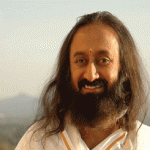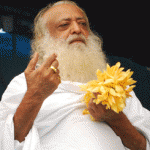In the dusty streets of Nathdwara where Jai Shri Krishna chants can be overheard with astonishing regularity, there stands a small house tucked away in a corner just round the main temple complex.
Here lived, not too far back in time, a sadhvi who though illiterate was considered a polar star of the Vedantic philosophy. Her name was Bhuri Bai.
Born into a carpenter family in the late 19th century, she was wedded tenderly at 13 to a rich painter aged 43! While the match seems startling today, it was not so utterly peculiar a few decades back.
As fate might have it, she was widowed within 12 years of marriage and later ill treated by her in-laws. On the intervention of the royal family of Sheorati, Mewar, she was offered separate residence of her own – the one where she lived all her life, flowered into a saint and died, leaving behind a huge vacuum for her ardent disciples. The place, now a residence cum ashram, is the one I visited recently, almost by accident.
 Left all alone so young, Bhuri Bai turned to God. While no one knows how she acquired so much mystical knowledge, there are several theories including that she was initiated into Yoga by a wandering female Muslim sage. Whatever may have been the reason for her elevation, the fact is that Bhuri Bai climbed the spiritual ladder to rarest of heights and there are tales galore of her extraordinary feats.
Left all alone so young, Bhuri Bai turned to God. While no one knows how she acquired so much mystical knowledge, there are several theories including that she was initiated into Yoga by a wandering female Muslim sage. Whatever may have been the reason for her elevation, the fact is that Bhuri Bai climbed the spiritual ladder to rarest of heights and there are tales galore of her extraordinary feats.
Once a wondering mendicant came to sexually exploit this young woman whom he learnt lived alone. But on gaining one vision of hers, he is believed to have fallen prostrate at her feet, seeking her forgiveness and mercy. He later stayed with her for the rest of his life as one of her best disciples.
Another time when a cow died soon after giving birth, Bhuri Bai begged God to find a way to save the life of the new born. Miraculously, Bhuri Bai had a metaphysical experience and she started lactating and herself fed the calf till it grew up healthy.
As an animal lover, there are countless episodes of her gentleness with dogs, squirrels, birds, cows and even donkeys.
Bhuri Bai was a great believer in the power of silence. The wall on the entrance of her house bears the word “Chup” (silence). When asked once about the technique to obtain the state of dhyan (deep concentration), she is believed to have retorted “Yahan bey-dhyan kaun hai?” (who is not already immersed in the meditative state) – condensing in one sentence the entire Vedanta.
Known for several such smart repartees, she was as self-respecting as articulate. When the King of Mewar asked her if she needed any aid for her sustenance, Bhuri Bai gave an answer that was not just full of self esteem, it also carefully guarded the honour of the royalty. She said, “How can I be in want when I have sons such as you!”

Her colourful paintings of Lord Ram along with Laxman and Shabri and another one of Kak Bhusundi relating the Ramayana still adorn the walls of one of her rooms with great vividness and speak of special talent.
Though mostly self taught and self realized, Bhuri Bai attributed her spiritual ripening to Bavji Chatur Singhji who is known to be the Valmiki of Mewari literature.
Sitting on the floor in front of her idol in her meditation room was one of most unique experiences of my life. The cool room filled me with calm and quietude, even if it lasted just that day. It was a rare condition and one worth aspiring for.
Probably this lady sage has already told us how to obtain the blissful state. On persistent requests about penning her wisdom, she had once spilled ink on a book and smeared it all over. At the end, she wrote just one precious word: ‘Ram’ on the cover page.
Her message was simple: “All else is darkness except the Name of God.”
Article by Akrita Reyar, published in zeenews.com, India, on March 12, 2013
(The views expressed by the author are personal)
Credit to Naina, Osho World
Related article Osho Speaks on Bhuribai















































